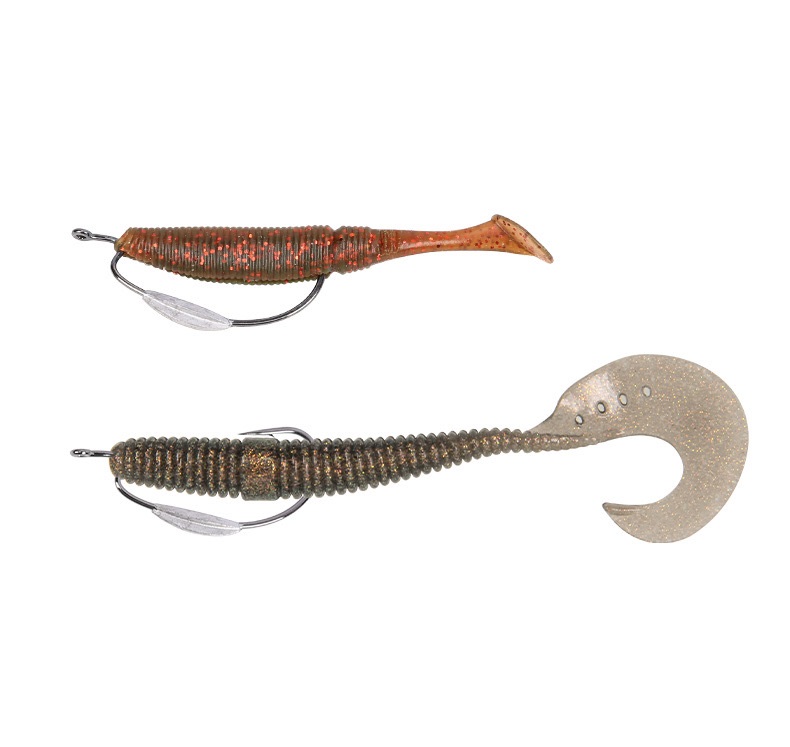Selecting the right fishing hooks for bass is a critical yet often overlooked aspect of angling success. A poorly chosen hook can lead to missed strikes, lost fish, and frustration on the water. Whether you’re flipping heavy cover or finesse fishing in open water, understanding common mistakes in hook selection ensures your gear aligns with your technique and target conditions. Below, we break down the top errors anglers make when choosing bass hooks and how to avoid them.
1. Ignoring Hook Thickness Relative to Gear
One of the most frequent mistakes is mismatching hook wire thickness with rod power and line strength. Thinwire hooks, while ideal for finesse presentations with light lines (4–10 lb test), can easily bend or straighten under the pressure of heavy rods and braided lines (e.g., 65 lb test). Conversely, thickwire flipping hooks paired with light gear may reduce sensitivity and hinder natural bait movement. For example, using a heavyduty hook with a mediumlight rod risks compromising hook integrity during a hard hookset, while a thin hook on stout equipment might fail to penetrate a bass’s jaw.
Solution:
Match hook thickness to your rod and line. Thinwire hooks work best with light to mediumlight rods and monofilament/fluorocarbon lines.
Opt for heavywire hooks when using braided lines and heavyaction rods, especially in dense cover where brute force is necessary.
2. Overlooking Hook Style for Specific Techniques
Not all hooks are created equal, and using the wrong style for your technique is a recipe for missed opportunities. For instance, ExtraWide Gap (EWG) hooks excel with bulky soft plastics like creature baits but are less effective for flipping due to their delayed penetration. Anglers often default to EWG hooks without considering alternatives like roundbend offset hooks, which provide immediate bite and better penetration in flipping scenarios.

Solution:
Use EWG hooks for Texasrigged plastics or Carolina rigs where a straightline pull is optimal.
Switch to roundbend or straightshank hooks for flipping and pitching, as their design ensures quicker penetration in a bass’s bony mouth.
3. Choosing the Wrong Hook Size for Bait Action
Hook size directly impacts bait performance. Oversized hooks can stiffen soft plastics, killing their natural action, while undersized hooks may fail to secure solid hooksets. For example, a 4/0 hook on a Senkostyle worm restricts its subtle “dying shimmy,” whereas a 2/0 hook preserves the bait’s lifelike movement. Conversely, large hooks are essential for baits like brush hogs, where the hook acts as a backbone to enhance appendage motion.
Solution:
Prioritize smaller hooks (1/0–3/0) for slender, actiondependent baits like stick worms.
Opt for larger hooks (3/0–5/0) when using bulky lures with multiple appendages to ensure rigidity and hooking efficiency.
4. Neglecting Hookset Mechanics
Even the best fishing hooks underperform with poor hookset techniques. Slack in the line during a strike reduces tension, allowing bass to spit the bait or shake free. Many anglers rely on aggressive, highforce hooksets, which can tear hooks from a fish’s mouth, especially with thinwire hooks.
Solution:
Maintain constant tension by reeling down before setting the hook.
Use a steady, sweeping motion rather than a violent jerk to drive the hook point deeper.

5. Failing to Adapt to Environmental Conditions
Bass behavior and habitat dictate hook choice. Heavycover environments demand thick, durable hooks to withstand abrasion from wood or vegetation. In contrast, clearwater scenarios may require smaller, less visible hooks to avoid spooking wary fish. Ignoring these nuances leads to lost fish and damaged gear.
Solution:
Use flipping hooks with reinforced shafts for punching mats or fishing timber.
Switch to finesse hooks with matte or dark finishes in clear, open water to reduce visibility.
Final Thoughts
Selecting bass hooks isn’t just about grabbing the first option in your tackle box—it’s a strategic decision that balances gear compatibility, technique, and environmental factors. By avoiding these common mistakes, you’ll improve hookup ratios, land more fish, and refine your approach to match the everchanging conditions on the water. Remember, the right hook acts as the critical link between a subtle bite and a trophy bass. Tight lines!